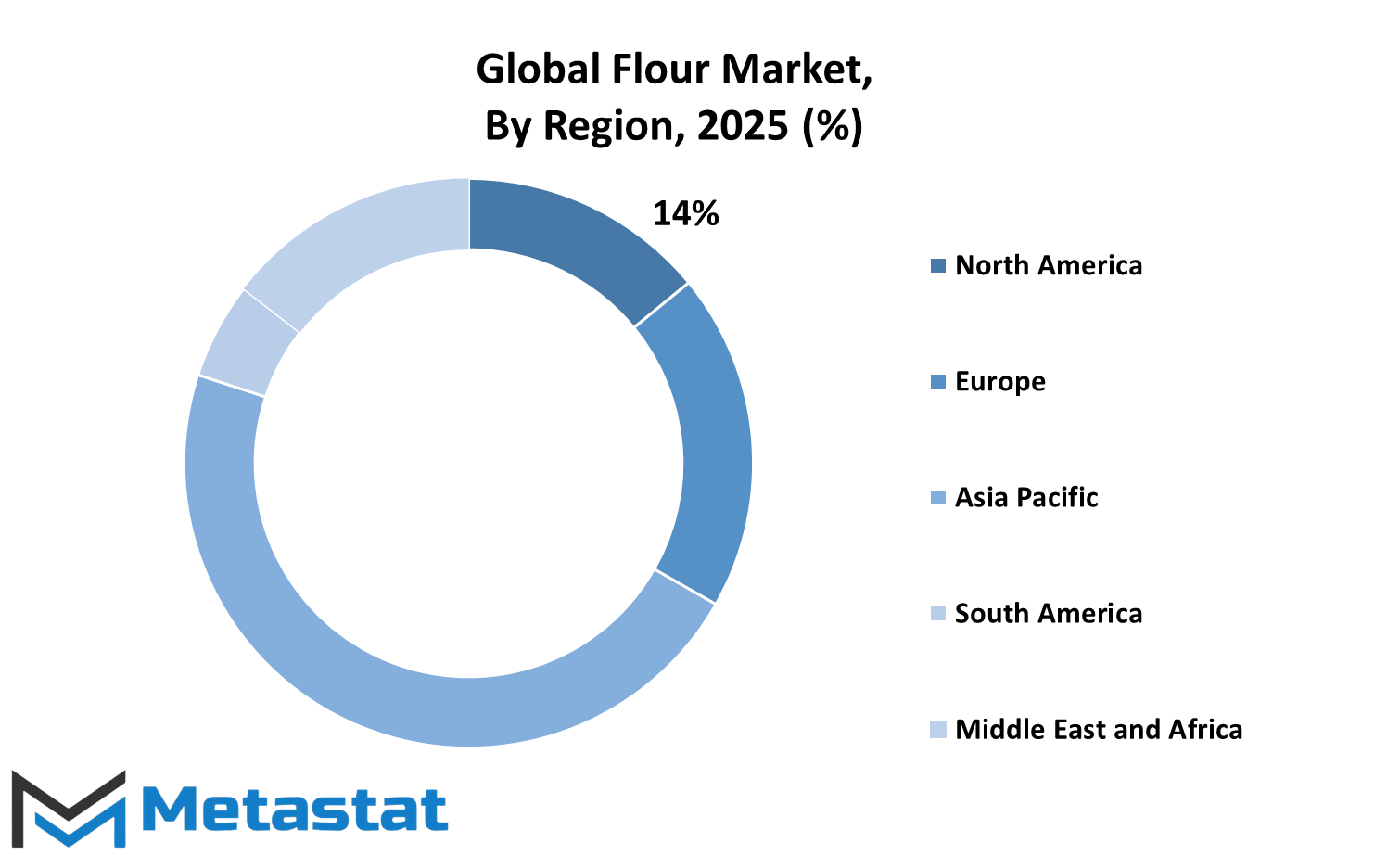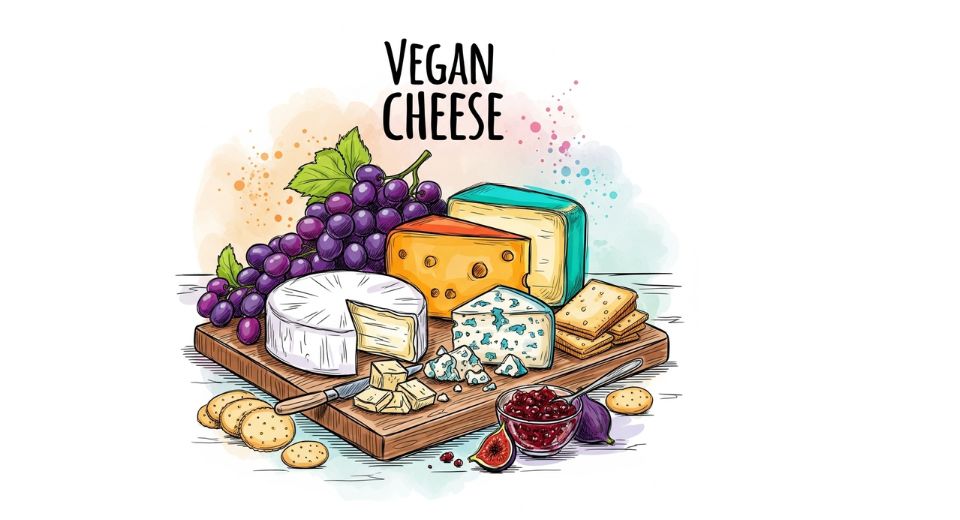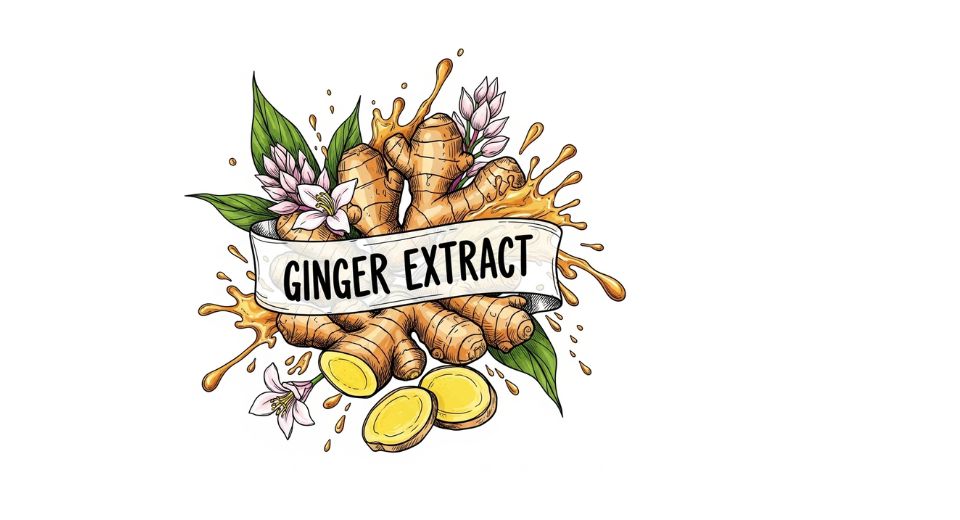MARKET OVERVIEW
The global flour market plays a front-and-center role in this food and beverage sector, as it offers basic ingredients for numerous products consumed worldwide. Flour is derived from milling of cereals like wheat, rice, corn, and other grains. Flour remains a staple of both traditional and modern diets and, by doing so, affects the culinary traditions of various cultures. This market will continue to grow depending on the preference of the consumer, dietary trends, and food processing technologies.
Flour manufacturing is a relatively lengthy process that involves the selection of grains, their cleaning, and finally, milling to powdery consistency. The purposes of this powder go beyond bakery products to include pasta, noodles, and confectioneries, and also non-food applications like biodegradable plastic and adhesives. The global flour market will continue to meet the demands for a healthy product with options such as gluten-free and fortified flour as the demand for an assortment of food products grows. The market's adaptability to nutrition trends and diets will further encourage diversification.
The breadth of the global flour market is huge, with many regions having unique consumption patterns and production approaches. The market is thus delineated with some consumers and producers from Asia-Pacific, Europe, North America, and Latin America. The Asia-Pacific countries are more likely to dominate the global flour market, backed by major consumption of flour in populous nations like China and India, where noodles and flatbreads are dietary staples. Special flours obtained from ancient grains and legumes will be in high demand in North America and Europe, fueled by greater health awareness of products and demand for alternative diets.
Advancements in various technologies will contribute significantly to the global flour market. Modern milling technology will assure efficiency, good yield, high flour quality, and low wastage. These innovations into the packaging and storages may further enhance shelf life and reduce wastage. Automation and digitalization of flour mills will enable production processes to meet rising demand without compromising on quality.
Another major concern affecting the market is international trade. Flour being a global marketable product will continue to be an important export-import commodity for many countries. Trade policies, tariffs, and international treaties will dictate flour movement from one border to another, thus affecting price and availability across the regions. Increasingly in the years to come, developing countries will play a major role as exporters and importers giving the global flour market a more dynamic character.
Environmental problems and sustainability practices will influence how the global flour market will be shaped. Since there is now greater focus on the need for carbon footprint reduction on all agricultural practices, buyers will be shifting to more environmentally efficient grain sourcing and milling practices. Organic and non-GMO flours will be the choice of consumers as they enhance their awareness of the environment in relation to the foods they purchase.
The global flour market will keep on evolving with changing consumer preferences, technological advancements, and global trade scenarios. The vast scope of the global flour market, coupling with multiple application areas and regions, cements its place in the food and beverage industry. As it confronts its challenges and opportunities, the market will maintain its position in helping meet the nutritional needs of the world.
Global flour market is estimated to reach $427.2 Billion by 2032; growing at a CAGR of 5.0% from 2025 to 2032.

GROWTH FACTORS
The globe flour market is projected to microlithshift in the coming years with respect of steady growth due to various factors. This growth has been propelled primarily by increasing demand for convenience foods and ready to eat products. More busy lifestyles among many people make them comfortable when preparing affordable meals, which typically include ready to eat and easy to prepare food such as bread, pasta, and baked products. This development is confirmed by the fact that majority of urban dwellers subject themselves to such fast-paced living in order to create higher need for those products.
An increase in knowledge regarding health and nutrition has also influenced demand. Consumers are becoming more self-aware of the consumption choices they make, such that whole grain and gluten-free flour have seen more demand. Consequently, manufacturers have to widen their product line for this one, thereby growing the market further. Most importantly, technological advancement with advanced milling processes has made it possible to generate wider varieties of flours enriched nutritionally to attract healthy-choice-oriented consumers.
Also, the growth of the food service sector contributes significantly to the expansion of the global flour market. From fast food chains to cafes and restaurants, flour occupies a very prominent position in many of their menu options, and this implies that the consumption of flour continually rises with the growing fast food industry. In addition, the increase of popularity in baking at home - as with the world pandemic - has given rise to the increasing demand for flour, which people will continue to do now since baking becomes a hobby.
There are also some constraining factors to market growth. For instance, price fluctuations in raw materials like wheat or grains influence the stability of flour prices and present a hurdle to both manufacturers and consumers. In addition, factors like the environmental damages caused by large-scale agriculture may also hinder consumer choices or regulatory policies and consequently slow the market's growth.
These are thus some of the barriers that the future of the global flour market faces; however, there are still many avenues open to the industry in years to come. The growing trend of diets biased towards plant-based constituents promises further opportunities for alternative flours derived from legumes, nuts, and other non-traditional sources.
These creative innovations from the industrialized generation will not only echo the aspirations of health issues, but will also go far into addressing environmental concerns with sustainable agricultural practices. Emerging markets of developing countries will develop an immense potential for future growth with rising income and changing eating patterns driving up the consumption of flour-based products.
All in all, the local flour market is won with some hurdles, but promising opportunities exist. Convenience, health awareness, and technology are some of the factors that allow for the expansion of this market. In fact, emerging markets and alternative flours in new claims will adorn the future of the industry in interesting ways.
MARKET SEGMENTATION
By Type
The global flour market is poised for growth in line with changing consumer patterns and evolving dietary requirements. It is expected to have significant values for different types of flour by 2025, indicating its overall importance in diets that are either traditional or modern. Wheat flour, which is a staple in many households around the world, should continue to dominate the market with a value of USD 179.3 billion. Given the wide acceptance of wheat flour in baking, cooking, and food processing, it will remain the dominant type of flour. Consumers increasingly seeking healthful alternatives will accelerate the growing demand for whole wheat flour and fortified wheat flour, thus fueling the growth of the flour market.
Demand for rice flour is also rising, estimated to be valued at USD 54.1 billion by 2025. Such an uptrend is due to increasing awareness surrounding gluten-free diets, as well as a sugar rush for substitute flours to cater to particular health needs. Consumers are also heavily inclined towards rice flour because of its fine texture and applicability in both sweet and savory. Growing knowledge concerning Asian cooking has given rice flour an opportunity to shine in many recipes.
Corn flour is also projected to command a basket revenue of USD 29.6 billion, as its culinary presence continues to flourish in traditions, particularly for Latin American and African cultures, with solid consumer demand for it in the preparation of tortillas, cornbread, and snacks. Also, the market is witnessing an increase in demand toward organic/non-GMO corn."
Although barley flour has a small share of the market, it will still reach a respectable value of USD 11.8 billion by 2025. Its nutrition is reaching the hands of most health-minded consumers today for factors like high fiber and essential vitamins. As they go looking for wholesomeness in their cooking and baking, barley flour should perceive a steady rise.
Various components in other kinds of flour will also be put to good use in amounts much in excess of USD 28.0 billion. Examples of such types include oat flour, chickpea flour, and almond flour. These niche market kinds address different dietary restrictions, such as gluten-free, paleo, and keto. The growing number of flour types reflects an overarching trend toward personalized nutrition, whereby health-conscious consumers are choosing products according to their health goals and lifestyle choices.
Given the above, the global flour market is likely to experience further diversification and expansion. Food technology innovations and sustainable agriculture are going to come to the forefront in 2025 and set the market trend. Flour varieties for healthier foods and better food systems will be the most highlighted on producers' agendas. This indicates sustained growth and adaptability in the market in response to consumer demand.
By Application
According to estimates, the global flour market will be on the trail for steady growth in future years with a lot of applications prompting various user segments. Flour is a very basic ingredient for almost all people across the globe and finds the important presence in the food manufacture. Further developments on population growth and changes in dietary habits should keep the market adapting.
Bakery products account for a large section of the global flour market share. Bread, cake, pastries, and other baked forms are still very much household items in cultures. Healthy whole-grain and gluten-free alternatives are much demanded, thus encouraging diversification on the part of the manufacturers. This trend is expected to continue, as consumers are more health conscious and seek products that complement their nutritional goals.
Noodles and pasta manufacturing is another important segment. Asian and European countries consume it, but it is becoming popular worldwide. Convenience will become a major factor for most consumers in choosing foods; thus, ready-to-cook and instant noodles are winning their way into homes. This trend would benefit the flour market with additional production based on quality and variety.
Snacks and other convenience foods are part of this growing division. More so than ever before, hectic lifestyles lead to an increased demand for food that requires little time to prepare. Chips, frozen snacks, and everything in between are made up of flour-based products. Manufacturers will continue to find new innovations making different flavors and healthier offerings to entice wider appeal.
Animal feeds are often neglected but are critical components of the global flour market. Flour is applied in feed mixes to supply proper feed specifications for livestock. However, there came an increasing demand for meat and dairy products, which contributed to the current growing demand for animal feed. Consequently, this situation would create a future market for flour, especially in regions with a significant focus on agriculture.
Last comes the category of others, which contains all the products from baby food to desserts. Parents have become more critical about what their child eats, meaning that the demand will rise for organic and enriched flour use. Desserts, on the other hand, have always been alluring among all age groups, and flour is a crucial part of their preparation.
Overall, the global flour market would get technologically advanced and turned toward sustainability and changes in consumer expectations. Innovations in milling techniques, sufficiency of green packaging, and changes in interest toward plant-based diets with their time should transform the global flour market. The flour market will thus have the agility to adapt to the moving trends and its quality to remain constant with reliability for the consumer's value. The journey into the future looks promising for the global flour market when opportunities exist across all its applications for growth.
|
Forecast Period |
2025-2032 |
|
Market Size in 2025 |
$302.8 billion |
|
Market Size by 2032 |
$427.2 Billion |
|
Growth Rate from 2025 to 2032 |
6.6% |
|
Base Year |
2024 |
|
Regions Covered |
North America, Europe, Asia-Pacific, South America, Middle East & Africa |
REGIONAL ANALYSIS
The aspects majorly affecting the worldwide flour market touch on variations in influence per region shaping its historical construct and prospects. Each geographical outlet can be said to result in the world grain market on different accounts concerning internal demand, cultural taste, and economic conditions.
The largest contributors to the flour market in North America are the United States, Canada, and Mexico. Growth trends have included health concerns among flour-consuming populations, with highly differentiated products such as gluten-free and whole-grain flours taking on increasing importance. As more and more consumers are cognizant of what they put into their bodies, the demand for alternate flours is bound to increase. Advancements in milling for technological processes globally, as well as the focus by many toward the organic realm, will further increase the demand across this region.
Europe, comprising such countries as the uk, Germany, France, Italy, and others, has a mature flour market. Change in consumer ages continues to fuel development in demand for specialty flours, such as spelt and rye, due to the increasing trend among consumers to preserve traditional and artisanal baking. The same concerns for the environment push for sustainable and locally sourced grains, which in turn will mold the future of the market in Europe. Food safety and quality standards set in place are stringent and contribute to the overall high quality of products across the continent.
The Asia-Pacific, broken up-to-into India, China, Japan, South Korea, and more countries, boasts vast opportunities for expansion in the global flour market. Today, with large populations and expanding economies, a growing demand for flour-based products is seen. Urbanization and increasing exposure to Western diets are supporting growing consumption of bread, pasta, and most of the flour-based products. Traditional ones like noodles and dumplings still contribute strongly to this picture. The many different culinary traditions within the region present a rich market while new technologies in food processing will ensure further growth.
Countries like Brazil and Argentina, as well as others, exhibit steady growth in the flour market. There is now increasing demand for traditional and new types of flour products from health-conscious consumers who are increasingly willing to try new products. Brazil is already ahead of the region with its burgeoning bakery industry. Economic fluctuations may vary the rate of success of the market as overall demands change, but continuing investments in food processing infrastructure will likely enhance this growth.
The Middle East and Africa include GCC Countries, Egypt, South Africa, and the rest of the world, with various challenges and opportunities. The increasing population and urbanization increase the demand for flour-based products such as bread and pastries. While flatbreads remain the staples in the Middle East, in Africa, it is more a clamor for wheat flour against local grains. Infrastructure development and trade agreements will play important roles in the future of this market within this region.
Thus, it is expected that the global flour market's current outlook is favorable, with a slow but steady growth trend, which would be region-specifically determined. Indeed, future trends shaping the flour market will include technological advancements, health trends, and sustainability efforts that will necessitate adoption by businesses with diversified regional customers.

COMPETITIVE PLAYERS
The steady growth trend of the worldwide market for flour is being influenced by changes in the consumption patterns of consumers, advances in technology, and the growing areas of application of flour in different industries. As already mentioned before, flour is one of the main ingredients used throughout the world's food. The evolution of diets causes changes in the need for particular flour types. Health-conscious consumers are increasingly pursuing whole grain, gluten-free, or organic options; hence, the diversification of companies. In addition, this surging demand is driving innovation and adaptation among manufacturers for the varying needs of a globally conscious population concerning nutrition values and food quality.
Such flour companies, e.g., King Arthur Flour Company Inc., Hindustan Unilever Limited (Brown & Polson), Ardent Mills, LLC, and Archer-Daniels-Midland Company, are among the key players who spearhead this change. The aforementioned companies are investing heavily in the product diversification needed and in sustaining practices, from sourcing grains responsibly to producing carbon-negative facilities. Setting new standards are these industry leaders. General Mills, Inc., Hodgson Mill, Inc., and Grain Millers Inc. also take the leap in technology advancement towards efficiency and quality in products. Automated milling processes and advanced packaging being only a few examples of how technology has redefined the marketplace are also taken into account.
The competitive scenario is becoming extremely lively with Interflour Group Pte Ltd, Grain Craft, ABF Grain Products Limited, ITC Limited, and Bob's Red Mill Natural Foods, Inc. constantly trying to find new ways to get an edge over their competitors. These players are looking at various avenues such as geographical expansion into international markets, strategic collaboration, and improved distribution channels to reach a larger audience. Focused on expansion into emerging economies, these markets are showing increasing demand for processed/packaged food, thus creating a potential avenue for growth.
The continued expansion of the global flour market into the future is well assured. Population increases, urbanization, and changing eating habits will all ensure that demand remains constant. In addition, the healthy eating trend might cause continued product innovations in flour types produced. The new technologies in precision agriculture to highly advanced milling technologies will also play an important role in determining the future of the industry.
The global flour market evolves at a much faster pace than before by demand from consumers and due to new technological innovations that key players are bringing. It is expected that his company would lead the market in the coming years if it adapts in such changes while keeping low keys on quality standards and sustainability practices.
Flour Market Key Segments:
By Type
- Wheat Flour
- Rice Flour
- Corn Flour
- Barley Flour
- Others (e.g., Buckwheat, Millet)
By Application
- Bakery Products
- Noodles & Pasta
- Snacks & Convenience Foods
- Animal Feed
- Others (e.g., Baby Food, Desserts)
Key Global Flour Industry Players
- King Arthur Flour Company Inc
- Hindustan Unilever Limited (Brown & Polson)
- Ardent Mills, LLC
- Archer-Daniels-Midland Company
- General Mills, Inc.
- Hodgson Mill, Inc.
- Grain Millers Inc
- Interflour Group Pte Ltd
- Grain Craft
- ABF Grain Products Limited
- ITC Limited
- Bob's Red Mill Natural Foods, Inc.
WHAT REPORT PROVIDES
- Full in-depth analysis of the parent Industry
- Important changes in market and its dynamics
- Segmentation details of the market
- Former, on-going, and projected market analysis in terms of volume and value
- Assessment of niche industry developments
- Market share analysis
- Key strategies of major players
- Emerging segments and regional growth potential








 US: +1 3023308252
US: +1 3023308252






